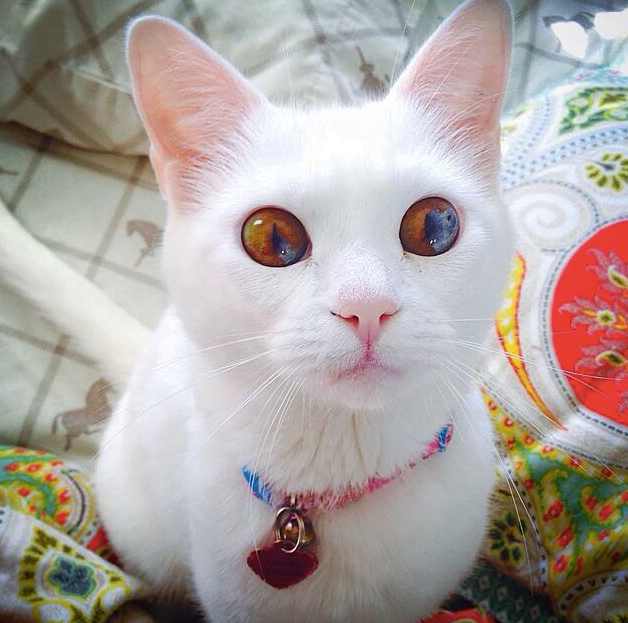Sectoral heterochromia, also segmental heterochromia, in cats (domestic cats) is when each eye is made up of two colours: blue and orange or yellow in various densities and intensities.

Usually heterochromia (full name ‘heterochromia iridium’) presents as one eye being blue and the other being orange or orange/yellow – called ‘odd-eyed’ or ‘odd-eye’ cat. This is complete heterochromia. But in sectoral heterochromia the division in colors is present in each eye and it is quite striking:

It is caused by the dominant white gene (which makes domestic cats all-white) and the white spotting gene also known as the piebald gene. This gene stops the production of pigment (melanin) in the fur of the cat and in the iris of the eye. It either stops the production or migration of pigment in one eye causing it to be blue or across part of the eye causing part of the eye to be blue. A lack of pigment presents as blue due to the refraction of light in the same way that the sky is blue on a cloudless day. Eye color is formed in the smooth muscle cells of the iris.
The dominant white gene can also cause deafness in white cats. It is quite common. Sectoral heterochromia must be very rare whereas complete heterochromia in all-white cats is relatively common.
Visitor to PoC – cat with subtle sectoral heterochromia
A visitor to PoC uploaded a photo of their gorgeous all-white Persian, Fenty. I think that Fenty has a subtle version of this rare eye color:

Complete heterochromia
Here is a nice photo of complete heterochromia in cats (odd-eyed cat):

Here is a video of a good example:


What a beautiful picture!
It’s weird, but the cat in the picture at the top is downright creepy looking.
Thankyou for answering and sharing about Fenty! Your explanation have given me better understanding about this phenomenon. Much love from Fenty!